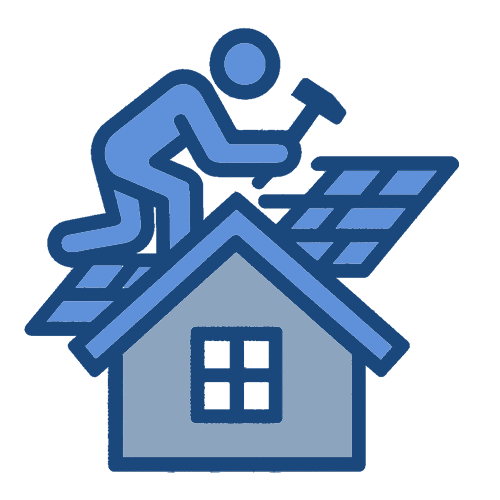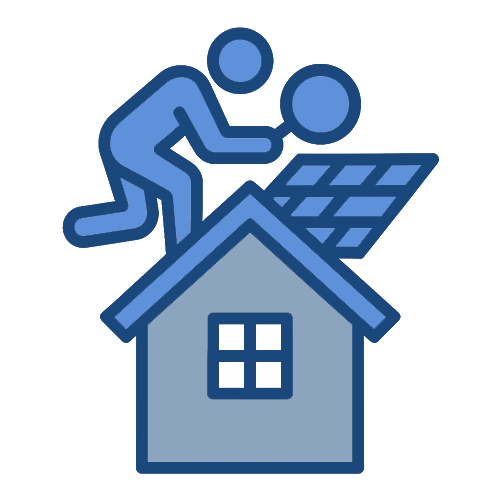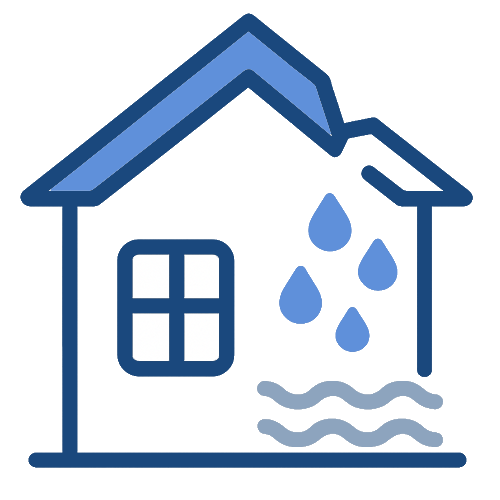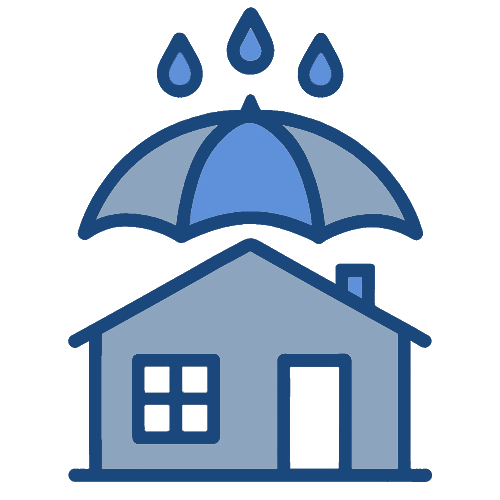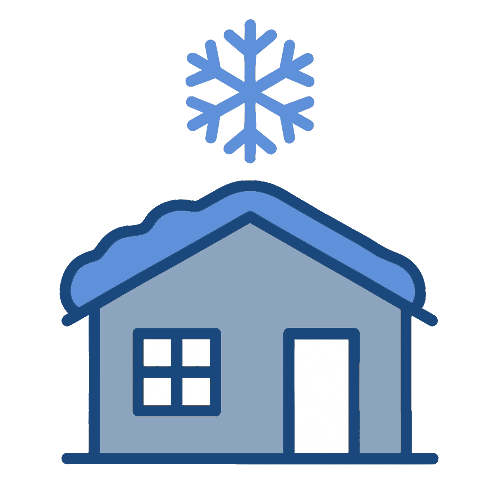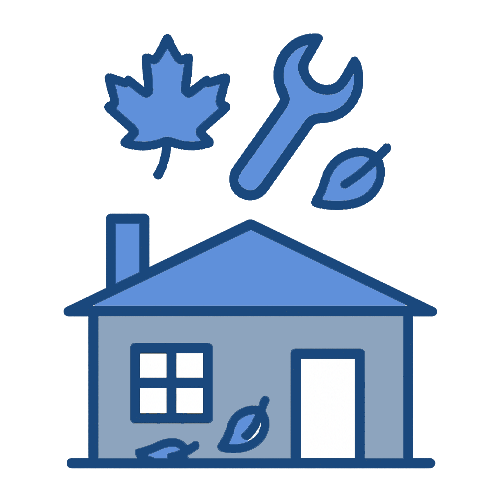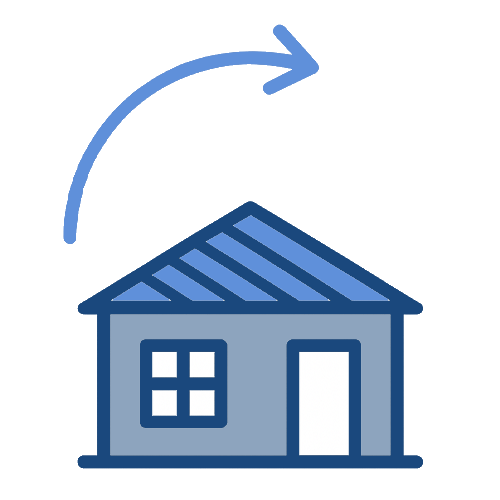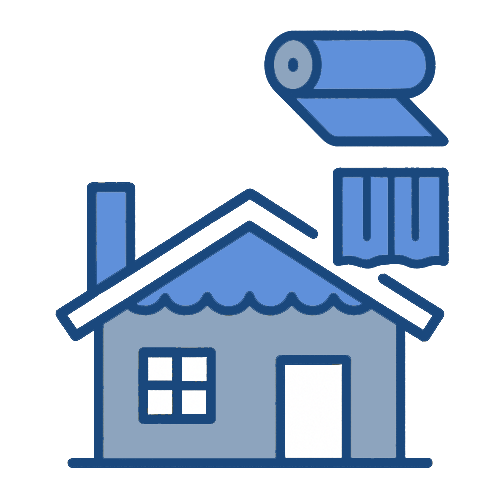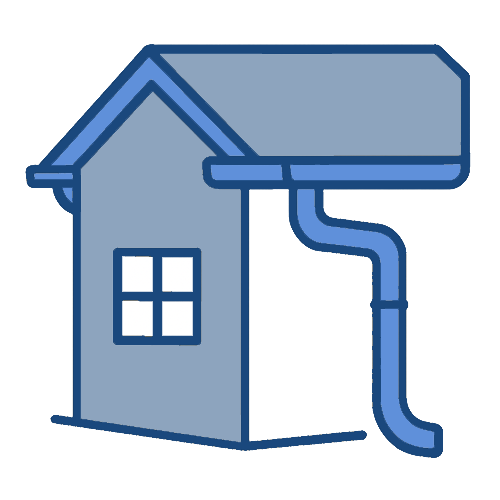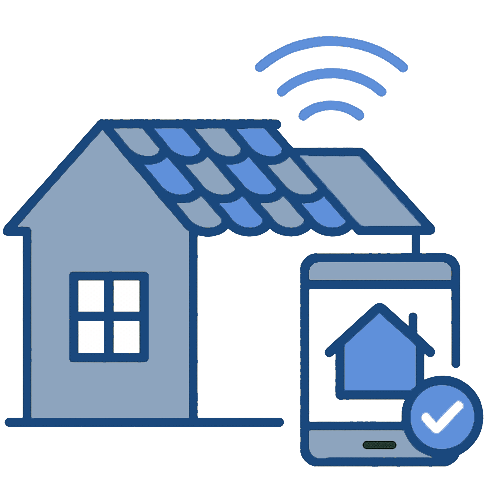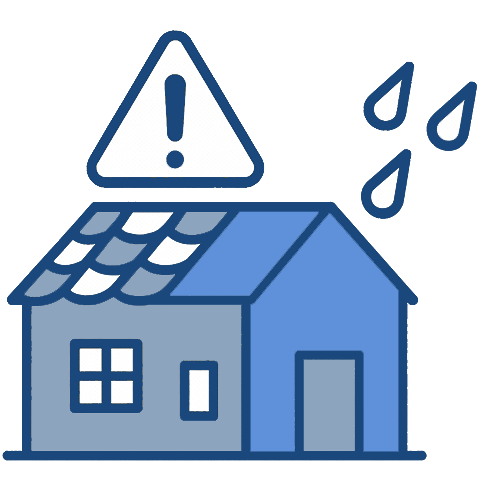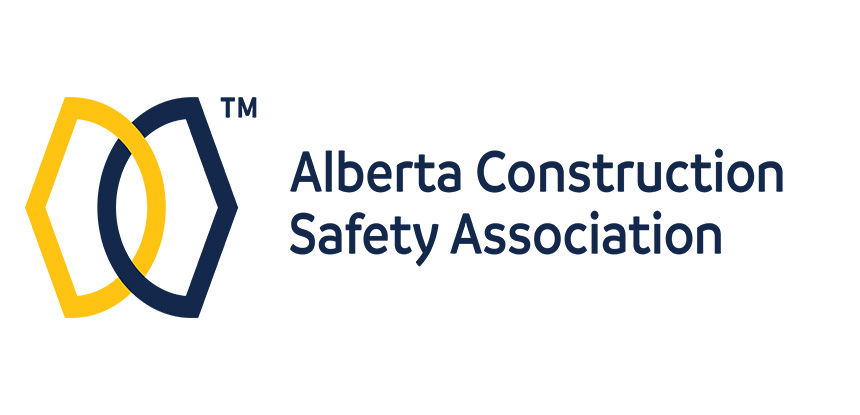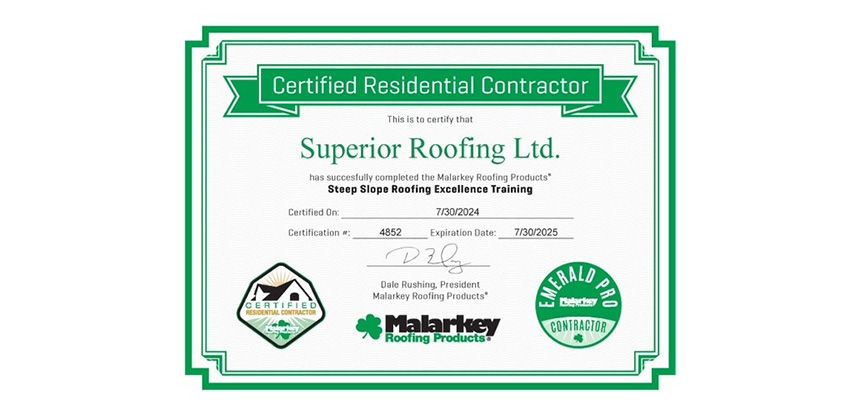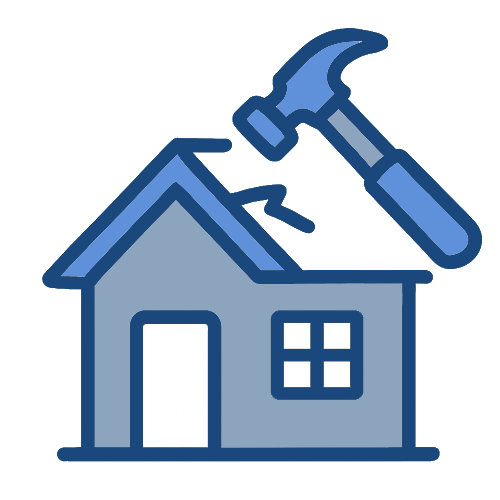
Residential Roof Repair Services in Calgary You Can Trust




Calgary’s Trusted Residential Roof Repair Contractors
-
Regular roof inspections are essential for Calgary roofing to catch issues like leaks, missing shingles, or sagging areas early, preventing costly repairs down the line.
-
Calgary's extreme weather, including hail, heavy snow, and temperature swings, makes timely roof maintenance critical to preserving roof integrity and performance.
-
Timely residential roof repair services can help you get the most out of your roof. They improve energy efficiency and avoid costly structural damage, among other things.
-
Professional residential roofing repairs resolve damage from storms, leaks, mold and improve energy efficiency. This important work is what keeps your home safe, comfortable, and efficient.
-
At Superior Roofing Ltd., we prioritize thorough inspections, high-quality materials, and efficient service to meet your unique repair needs.
-
Preventive care, like regularly cleaning your gutters and getting an annual professional inspection, protects your repaired roof and prevents the need for extensive repairs down the line.
🏠 Fast & Reliable Home Roof Repairs in Calgary
Looking for professional residential roofing repair services in Calgary?
When it comes to maintaining the integrity of your home in Calgary, one essential aspect that should never be overlooked is the condition of your residential roof. A well-maintained and properly functioning roof not only protects your home from harsh elements but also adds value and curb appeal.
Superior Roofing is here for you. From common roofing issues to the benefits of professional residential roofing services, we'll equip you with the knowledge to make informed decisions about your roof's health.
Superior Roofing provides fast and professional residential roof repair services throughout Calgary. Whether you’re dealing with storm damage, an active leak, or aging shingles, we’ll assess the issue and fix it right. Our repair work complements our broader roofing services, including full inspections, seasonal maintenance, roof replacements, and new installations. We also handle hail damage and water damage, leak detection, and full restoration projects. To keep your home safe year-round, we offer weatherproofing, hailproofing, rainproofing, and winterproofing solutions. Add in fall season services, insulation improvements, exterior system integration, and insurance claim assistance, and you’ve got a one-stop solution for dependable roof care in Calgary.
At Superior Roofing, we install and service a range of roofing systems to meet every need across Calgary:
-
SBS Modified Bitumen – Flexible, durable, and ideal for extreme weather.
-
TPO Roofing – Energy-efficient, single-ply and reflective, perfect for flat and low-slope roofs.
-
EPDM Roofing – Proven performance in cold climates with strong water resistance.
-
Euroshield Rubber Roofing – Eco-friendly, impact-resistant, and built from recycled materials.
-
Asphalt Shingles – A cost-effective classic for residential properties.
-
Cedar Shakes – Natural beauty with added insulation and curb appeal.
-
Metal Roofing – Sleek, long-lasting, and low maintenance for modern builds.
-
Flat Roofing Systems – Ideal for commercial buildings and solar panel integration.
-
Shingle Roofing – Includes asphalt, rubber, and cedar for maximum versatility.
We help homeowners and property managers choose the right roofing solution for long-term value, protection, and performance.
Spotting Roof Trouble Early
By addressing roof issues early on, you can save yourself from expensive repairs down the line and keep your home safe from Calgary’s ever-changing weather conditions. Conducting routine inspections, particularly in the winter months, is key to identifying potential problems before they become more serious.
Identify Water Stains on Ceilings or Walls
Water stains usually look like dark or yellowish blotches on ceilings or walls, indicating a possible roof leak. This may be due to broken shingles, failed flashing, or faulty sealing around vents.
Repairing a leak as soon as it’s discovered saves your roof from structural damage and mold contamination.
Look for Missing or Damaged Shingles
Missing shingles leave your roof without any barrier against water intrusion. Damaged shingles—any shingle that is curling, cracked, or blistering—compromises roof integrity with age.
Regular weekly visual inspections and after a major storm move through the area are the best ways to catch these warning signs early.
Notice Sagging Areas or Cracks
A roof deck that is sagging or has visible dips can indicate serious structural concerns, potentially caused by long-term moisture exposure or deteriorated materials from aging.
An immediate professional inspection is the only way to ensure your safety and avoid your roof’s gradual deterioration.
Monitor for Mold, Algae, or Moss Growth
When growth forms on your shingles, it traps moisture underneath, speeding up the deterioration. Calgary’s climate is much drier than Vancouver’s.
By keeping up with routine cleaning following storms or major snow melts, you can avoid a lot of trouble down the line.
Check Flashing and Energy Efficiency
Broken flashing around chimneys or vents is a direct path to leaks, and higher energy bills might mean your roof has inadequate insulation.
Neither one is good, and both require immediate attention.
Contact us today, and we’ll take care of your roofing needs with reliable service, whether that’s an inspection or a complete replacement.
Backed by more than 25 years of expertise, we stand by all of our work to defend your home with proven crews and top-rated materials.
Why Calgary Roofs Need Special Care
Calgary’s overheating summers and extreme freeze-thaw cycles make ensuring your roof is as durable as possible especially important. Extreme weather conditions, such as our infamous Calgary winters, heavy snowfall, and hailstorms, lead to severe wear and tear on roofing materials.
These extreme conditions wreak havoc on regular asphalt shingles, leaving them prone to cracks or tears. Calgary is no stranger to extreme hailstorms that destroy roofs by the hundreds of thousands. Installing hail-resistant shingles or using metal roofs provides extra protection and long-term value.
Severe temperature changes, like Calgary’s frigid winters transitioning into sweltering summers, put immense pressure on roofing materials and can cause leaks or warping. Regular inspections and maintenance, essential in Calgary’s climate, prevent costly repairs, extend roof lifespan by decades, and safeguard both your home and your budget.
With a little proactive care, your property can stay healthy and weather-resistant through every season.
The Importance of Timely Repairs
Ignoring even minor roofing issues can lead to significant and costly damages in the long run. Calgary's weather, with its heavy snowfall, strong winds, rain, and occasional hailstorms, can take a toll on your roof. Regular inspections and timely repairs are crucial to identifying and resolving problems before they escalate.
Common Roofing Problems in Calgary
-
Leaks and Water Damage: Calgary's frequent precipitation can cause leaks, leading to water damage and mold growth. Professional roof repair services can identify the source of leaks and provide effective waterproofing solutions.
-
Shingle Damage: Extreme temperature fluctuations and strong winds can result in cracked or missing shingles. Prompt repairs prevent further damage and maintain the integrity of your roof.
-
Flashing Issues: Damaged or improperly installed flashing can lead to water penetration. Expert repair services ensure that the flashing is properly installed and sealed.
-
Ice Dams: In Calgary's cold winters, ice dams can form on roofs, causing water to back up and potentially damaging the roof structure. Professional repairs address ice dams and prevent future occurrences.
-
Hail damage: Hailstorms can wreak havoc on your roof, causing dents, cracks, and compromised shingles. It is essential to address hail damage promptly to prevent further deterioration and potential leaks. At Superior Roofing, our expert team specializes in assessing and repairing hail damage, ensuring the long-term integrity of your roof. Trust us for reliable hail damage repairs.
Benefits of Prompt Roof Repair
Addressing roof issues without delay helps prevent costly structural damage, such as weakened framing or compromised ceilings, which can escalate if left unattended. In addition to harming ceilings and walls, a roof leak invites mold to grow. This creates serious health hazards as well as exorbitant remediation costs.
Promptly addressing leaks helps protect your insulation. More importantly, it helps your home maximize heat retention during Calgary’s harsh winters as well as heat prevention in summer. This not only prevents energy loss—up to 30% can escape through a compromised roof—but saves you money on utility bills.
Quick roof repairs increase your roof’s longevity, preventing the need for early roof replacements. A well-done repair improves your home’s value and curb appeal, showing potential buyers that the property is in good shape.
By addressing issues sooner, you’ll prevent extensive damage and avoid high labor costs. Additionally, you’ll sleep easier knowing your roof is equipped to withstand Calgary’s severe climate conditions.
HIGHLY REVIEWED



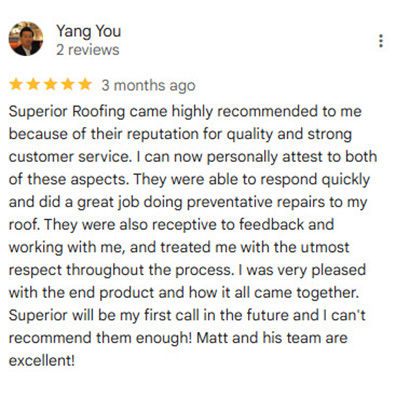

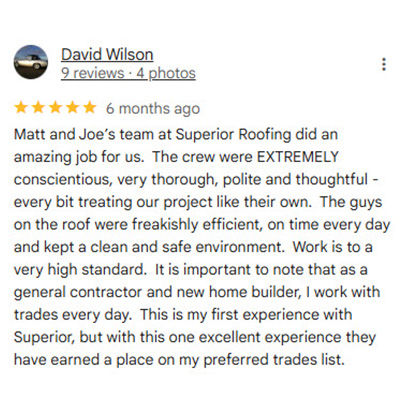
Problems Solved By Expert Repair
Expert commercial roof repair takes care of troublesome leaks that could lead to water damage and mildew. These leaks usually result from cracked shingles, compromised flashing, or poorly executed seals.
Consider the case of intense storm events, which can flood malfunctioning, clogged downspouts, accounting for 15% of leaks, putting roofs and foundations at risk. Mitigating energy-inefficient homes is a top priority.
Damaged roofing can damage insulation, sending heating bills through the roof during Calgary’s brutal winters. Emergencies such as storm damage, missing shingles, or sagging areas require immediate repair to prevent unsafe conditions and further damage.
In many cases, sagging roofs indicate a more serious problem that needs to be repaired first before it develops into an expensive roof replacement. Our Roof Repair Calgary services focus on long-lasting solutions.
We take a holistic approach to your roof’s health, protecting not just your home but its value by as much as 20%!
Our Calgary Roof Repair Approach
It begins with thorough inspections to determine the true condition of your roof. This initial step allows us to spot problems such as broken shingles, water intrusion, or deck rot which are common in Calgary’s weather.
Our experienced team takes pride in using only the best materials and labor to create the best repair possible every time. We could, for instance, take them to task by substituting basic, easily damaged asphalt shingles for long-lasting, weather-ready materials that can better withstand Calgary’s severe freeze-thaw winters.
Open communication is important, which is why we always offer detailed, transparent estimates based on your roof’s specific situation—no upselling or hidden fees.
Our prompt and professional service ensures minimal disruption to your property, getting you back to your everyday life in no time. Having been in the roofing industry for over 25 years, we understand how preventive maintenance saves you money on repair work and increases the longevity of your roof.
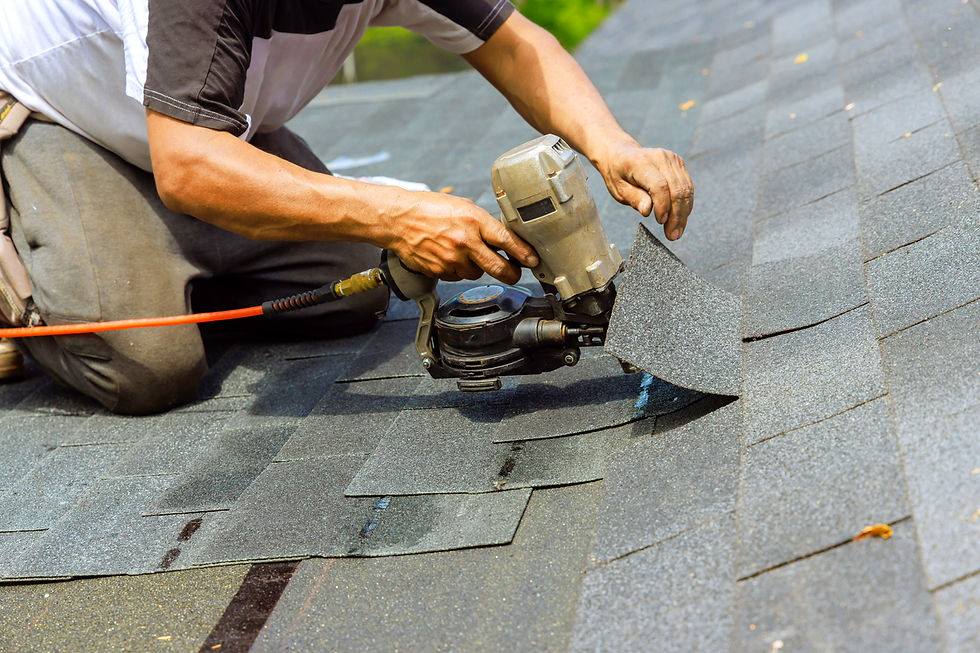
How It Works
Final Inspection & Satisfaction Guarantee
03

01
Free Consultation & Estimate
Schedule an appointment with our experts. The roofing estimator will come to survey your roof to provide a more accurate cost estimate.
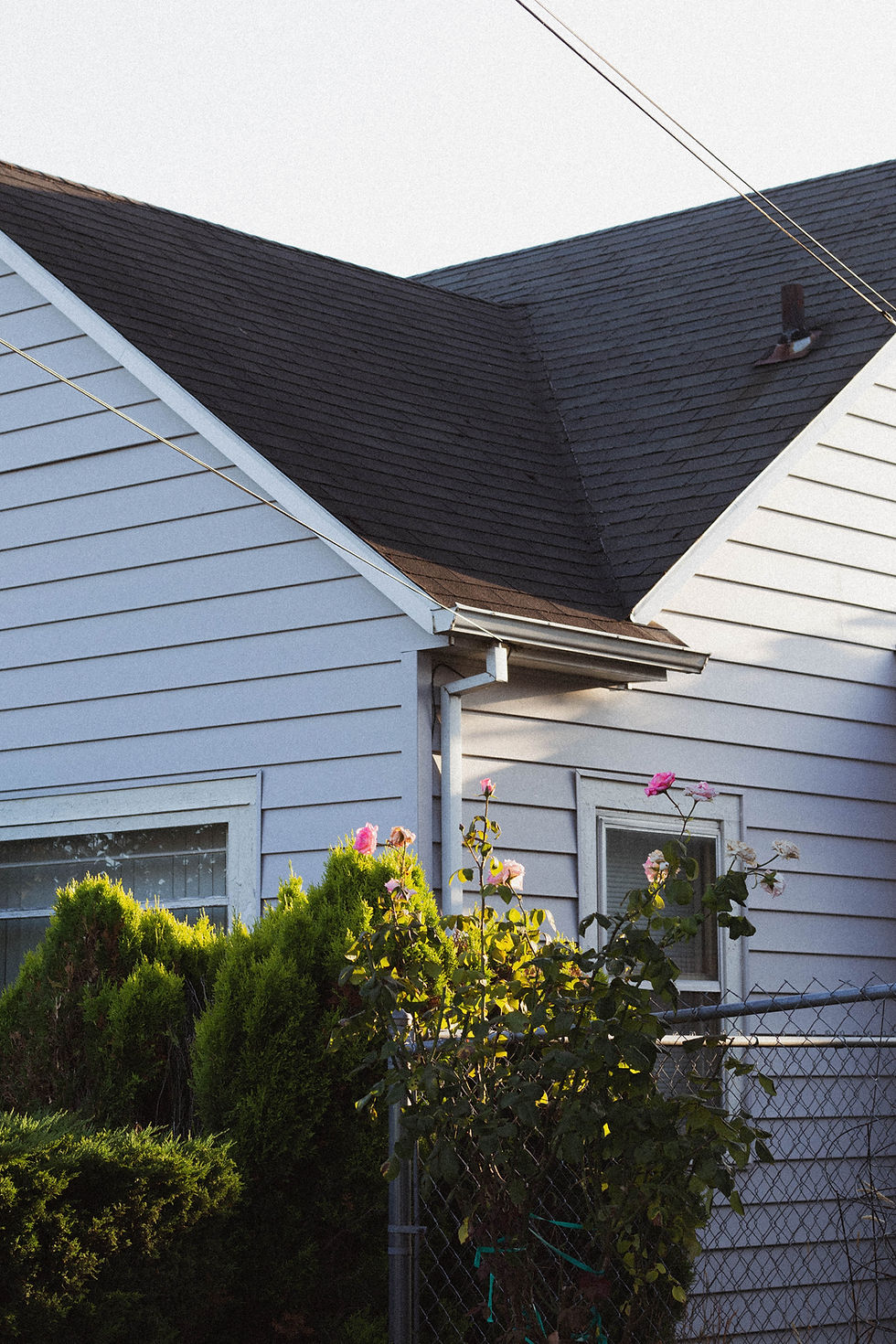
02
Expert Installation & Quality Work
Once the deal is closed and payment is finalized, the project timeline will be set.

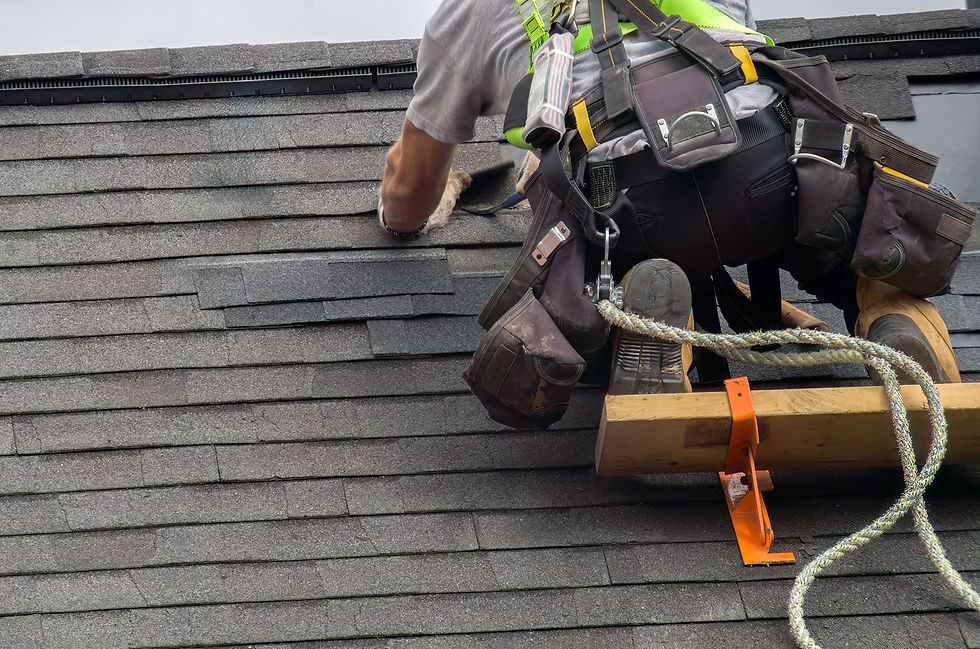
Understanding Repair vs Replacement
Determining whether to repair or replace your roof depends on several factors. The extent of the damage plays a key role. For example, widespread issues like curling shingles or significant damage concentrated in a single area may signal the need for a full replacement.
Age is another critical factor—if your roof is nearing the end of its lifespan, ongoing repairs may outweigh the cost of installing a new roof. Calgary’s climate, with its cold winters and hot summers, accelerates wear, making regular assessments essential.
Investing in a new roof can offer long-term savings, particularly when modern, durable materials are chosen. Routine maintenance and timely repairs can extend a roof's life significantly.
The Benefits of Professional Roof Repair Services
For your home's roof repairs, it's crucial to entrust the task to capable hands. At Superior Roofing, we understand the significance of a reliable and well-maintained residential roof. We are proud to offer a comprehensive range of services designed to cater to all your residential roofing needs.
As a reputable roofing company, we have established a solid reputation for delivering top-notch solutions for residential roofing projects. Whether you require roof repair, replacement, emergency service, or installation, our team of skilled professionals is equipped with the expertise and experience to provide exceptional results.
If your roof has suffered damage from harsh weather conditions, age, or unforeseen circumstances, our dedicated team is here to help. We specialize in assessing and repairing various issues, including curled or cracked shingles, leaks, sagging areas, or any other damage that compromises the integrity of your roof. With meticulous attention to detail and the use of high-quality materials, we ensure that your roof is restored to its optimal condition.
Expertise and Experience
Professional roofing contractors in Calgary possess the necessary expertise and experience to assess the condition of your roof and provide effective repair solutions. They are equipped with the knowledge to handle various roofing materials, ensuring proper repairs that extend the lifespan of your roof.
Quality Workmanship and Materials
By hiring professionals, you gain access to top-quality materials and workmanship. They use industry-leading techniques and employ advanced tools to ensure durable repairs that withstand Calgary's challenging weather conditions.
Cost-Effectiveness
While some homeowners may attempt DIY roof repairs, it's essential to consider the long-term costs. Improper repairs can lead to further damage and the need for extensive renovations. Investing in professional roof repair services initially saves you money by preventing major repairs or premature roof replacements.
Peace of Mind and Warranty Protection
Professional roofing contractors offer warranties on their work, providing you with peace of mind and protection. Should any issues arise after the repair, you can rely on their expertise to rectify them promptly.
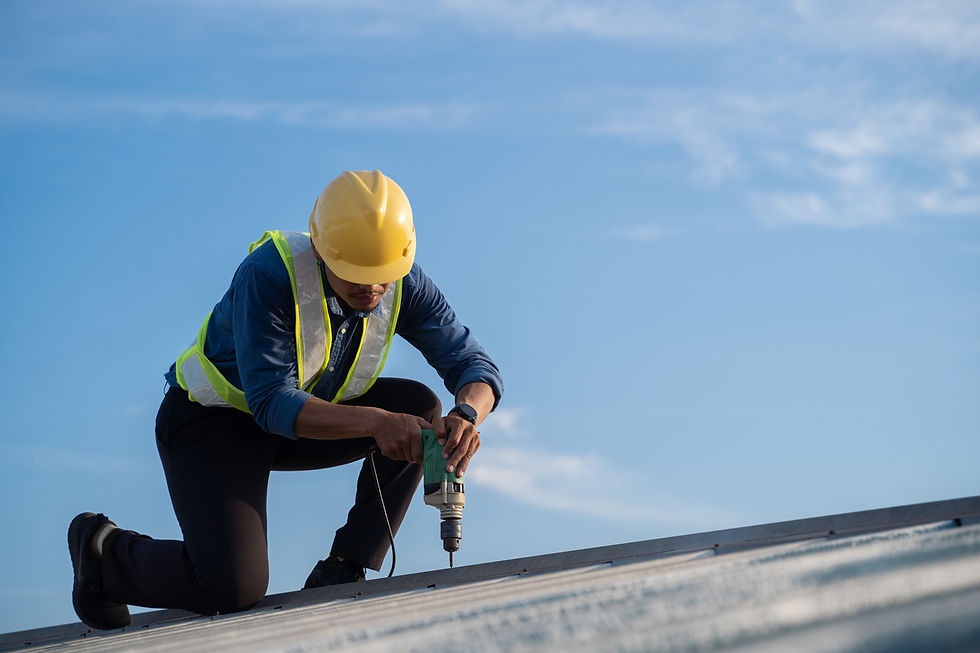
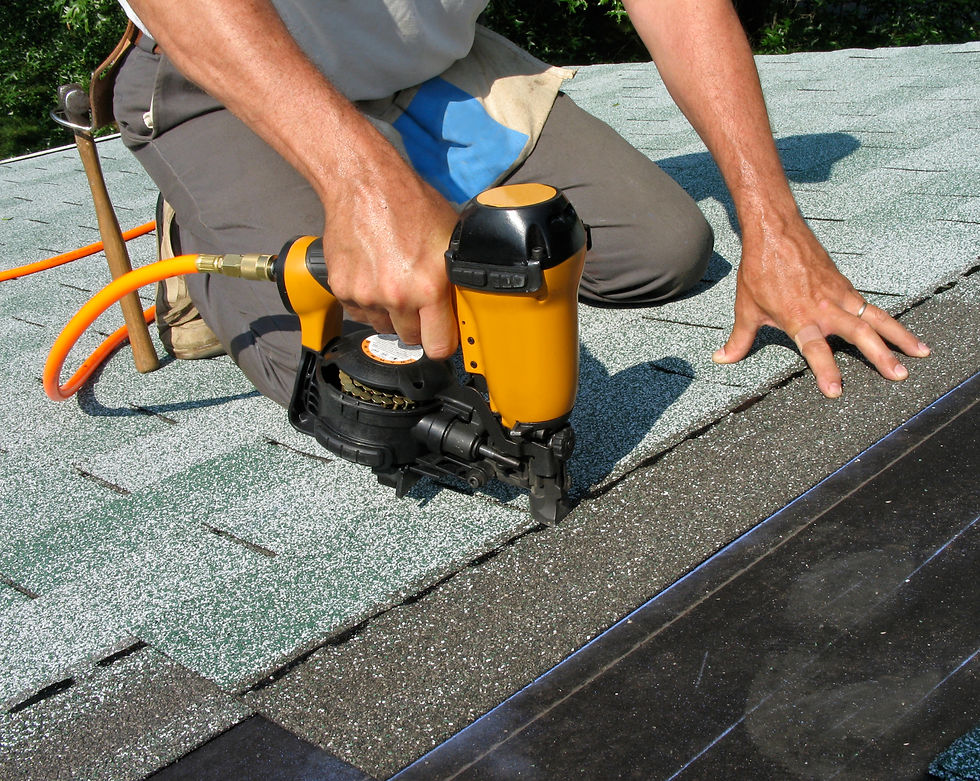


Maintaining Your Repaired Roof
Proper maintenance ensures that your repaired roof can weather Calgary’s erratic storm patterns. Planning regular maintenance inspections allows you to catch the early warning signs, such as loose shingles or small leaks. These problems may seem small at first, but don’t let them fool you.
A regular maintenance schedule, like removing debris and checking seals, can almost double the life of your roof. For example, following one of Calgary’s multiple annual hailstorms, quickly evaluating any damage or potential wear will keep your roof safe and strong.
Clearing gutters and downspouts is equally important. Clogged drainage systems cause water buildup, contributing to leaks and even foundation issues. Fifteen percent of leaks originate here.
Keeping records of repairs and maintenance will keep your warranty up to date and maintain resale value. Calgary’s challenging climate requires diligent maintenance to avoid further deterioration of repaired roofs.

Superior Roofing is Here to Help
Proper roof maintenance protects the entire infrastructure of your home. Additionally, it will help you save money while giving you peace of mind during Calgary’s ever-changing weather. We bring the same level of quality and care to our residential roof repair service. By preventing issues before they escalate, our services ensure the longevity of your roofing investment. Alongside our crew, you’ll receive an unparalleled level of craftsmanship paired with an authentic local knowledge of what Calgary homes need the most.
If you’re starting to see signs of wear or damage, it’s best not to delay. Just a small, timely roof repair could save you from more extensive and expensive repairs later on. Residential Roof Repair Calgary is your go-to roof repair specialist. Together, we’ll ensure your home is healthy, happy, and prepared to make the most out of everything each season has to offer! To find out what makes us different and why we take quality seriously, check out our About page for all our trust credentials.

At Superior Roofing, we are committed to delivering unmatched quality and customer satisfaction. We understand that every residential roofing project is unique, and we tailor our services to meet your specific requirements. Our team is dedicated to providing timely and efficient service, ensuring minimal disruption to your daily life.
When you choose Superior Roofing for your residential roofing needs, you can rest assured that you are in capable hands. We take pride in our commitment to excellence, utilizing the latest industry techniques and high-quality materials to ensure the longevity and performance of your roof.
To learn more about our residential roofing services and how we can assist you, please contact us today. Our friendly and knowledgeable team is ready to answer your questions, provide expert guidance, and offer a free estimate for your roofing project. Trust Superior Roofing for all your residential roofing needs.
OUR PROJECTS
Residential roof repair in Calgary ensures that your home is always protected from the city’s unpredictable and extreme weather conditions. Whether patching a leak or repairing storm-related damage, prompt intervention prevents further deterioration and keeps your roof in peak condition for years to come.
Calgary’s western climate, including severe snowfalls and freeze-thaw cycles, adds to the need for regular roof maintenance for Calgary homeowners.
With Superior Roofing’s local expertise, we’ll get the job done right—quickly and effectively—so your roof can protect your home day in and day out.

Sage Valley Road NW, Calgary, AB

3030 Bishop Dr SW, Calgary, AB
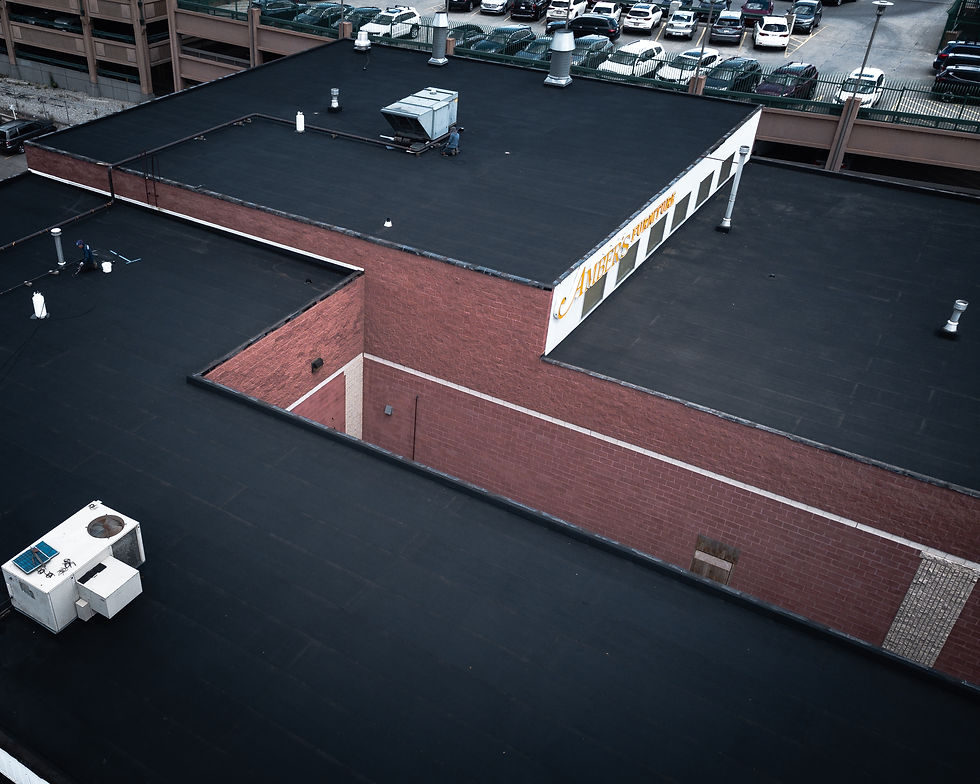
32 St NE, Calary, AB

Cameron Ave, Calgary, AB

36 Elmont Dr SW, Calgary, AB

6919 Livingstone Dr SW, Calgary, AB
FREQUENTLY ASKED QUESTIONS
Examples include missing, cracked, or warped shingles, leaks, sagging areas, or evidence of damage such as water stains on ceilings. If you are experiencing any of these signs, you should engage a roofing professional to inspect and maintain your roof as soon as possible.
The residential roofing experts at Superior Roofing Calgary understand how Calgary’s harsh winters, hailstorms, and temperature swings can create serious wear on roofs. Routine maintenance is important to help your roof stand against these special circumstances.
Fast repairs stop small leaks from turning into major expenses. They further keep your home safe from water damage, increase energy efficiency, and prolong the life of your roof.
That really depends on the damage. While minor problems can usually be fixed, extensive deterioration or an overall old roof might need to be replaced. Only a trained professional will be able to provide a solution that works best for your roof.
The duration of roof repairs depends on the scope of the project, including the extent of damage and the complexity of the repair. Smaller repairs can often be completed within a day, while larger projects may require several days or more.
We offer emergency roof repair services to serve you in these kinds of emergencies. You can reach out anytime to get the rapid response you need.
It is recommended to have your roof inspected at least once a year, ideally during the spring or fall. Regular inspections help detect minor issues before they escalate into significant problems.
While minor repairs like replacing a single shingle may be feasible for confident DIY enthusiasts, it is generally recommended to hire professional roof repair services. They have the knowledge, skills, and safety equipment necessary to perform thorough repairs.
Coverage for roof repairs depends on your insurance policy and the cause of the damage. It is advisable to review your insurance policy and consult with your provider to determine the coverage details.
Replacing a few damaged shingles may be possible for homeowners with experience in roofing repairs. However, it's crucial to ensure that the replacement shingles match the existing ones in terms of type, color, and quality to maintain a cohesive appearance.

